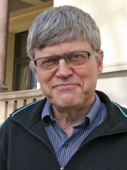Time is Space
Time is Space
Unconscious Models and Conscious Acts
Principal investigators
Abstract
Metaphors are more than rhetorical devices used to embellish poetry. In their famous study, Metaphors We Live By (1980), Lakoff and Johnson argued that metaphors like argument is war are not only pervasive in everyday language, but also inform the way we think and act. Metaphor theory thus provides a fruitful approach not only to linguistics, but also to cognitive science (e.g. the study of neural activity in the brain, Feldman 2006), the social sciences (e.g. political ideology, Lakoff 2002) and the humanities (e.g. musicology, Zbikowski 2007). Although metaphors largely pertain to unconscious cognition, they motivate conscious thinking and behavior. A field where metaphors have been particularly fruitful is the study of time. Humans have no direct perception of time, which is thus an abstract concept. In language, spatial constructions are used to create metaphorical temporal expressions. When we say in November (English), v nojabre (Russian) and w listopadzie (Polish) we use spatial prepositions to describe a period in time as if it were a container in which we could place an action. Even though the TIME IS SPACE metaphor is probably universal, there is much variation among languages and cultures. Our project investigates the TIME IS SPACE metaphor on the basis of well-documented data from Slavic languages including temporal adverbials and the grammatical categories of tense and aspect. Although a number of metaphors have been investigated in recent years, the historical development of metaphorical systems has not received much attention in scholarly literature. We will compare how time is understood in language with how it is understood in other abstract domains, such as ideology, science and art. Our goal is to find out more about how metaphorical systems develop, and to what extent the mechanisms underlying this development are comparable across domains.
Fellows









